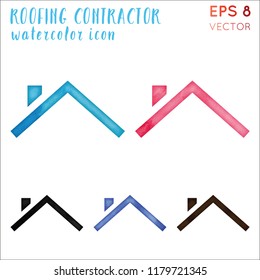Ready Your Wall Surfaces For Painting With Essential Suggestions And Strategies That Guarantee A Smooth Coating-- Explore The Vital Steps To Improve Your Project
Ready Your Wall Surfaces For Painting With Essential Suggestions And Strategies That Guarantee A Smooth Coating-- Explore The Vital Steps To Improve Your Project
Blog Article
Content By-Mathiasen Pacheco
When you're prepping your wall surfaces for painting, it's critical to comply with a methodical process to make certain a perfect finish. Start by analyzing the wall surface for any type of damages; this step can make or break your job. Once you've recognized any problems, cleaning up the surface appropriately is essential, as an unclean wall surface can impact paint bond. After that, you'll need to patch any kind of flaws and apply a guide. However there are specific methods and suggestions that can raise your prep work video game-- allow's discover those more to achieve the most effective results.
Assessing Wall Condition
Before you get your paintbrush, take a minute to assess your wall surfaces' condition. Check for any kind of visible damage like splits, holes, or peeling paint. These flaws can affect how the paint sticks and looks as soon as it's completely dry. If you notice any type of significant damage, you'll require to focus on repair work prior to diving into painting.
Look carefully at the appearance of your walls. Is the surface area smooth, or exists structure that might call for special consideration? Smooth wall surfaces typically call for much less prep, while textured surfaces may require even more time to repaint equally.
Additionally, consider the previous paint task. If the old paint is glossy, it mightn't enable new paint to stick correctly. You'll need to know if your walls have actually been repainted with oil-based or water-based paint, as this can affect your choice of guide or paint.
Lastly, take https://www.asiaone.com/lifestyle/home-interior-painting-tricks-remember-if-you-have-small-space of any dampness concerns. If you see indications of water damage or mold, address these issues right away to stop more issues.
Cleansing the Surface area
Once you have actually assessed the problem of your walls, the following step is cleaning up the surface area. Begin by collecting your materials: a pail, cozy water, a mild detergent, a sponge or fabric, and a scrub brush for tougher spots.
Begin on top corner of the wall surface and function your method down. Mix the detergent with cozy water in your pail, then dip the sponge or towel right into the solution. Wring it bent on stay clear of excessive dampness on the wall surfaces.
As you clean up, pay close attention to areas that might've gathered dirt, oil, or finger prints. For stubborn stains, use the scrub brush delicately to prevent damaging the paint under. Wash https://gregoryrepyi.blogsvirals.com/31903329/what-are-the-actual-costs-associated-with-hiring-a-painting-contractor or towel frequently in clean water to avoid spreading out dirt around.
After cleansing, it's vital to clean the walls with a moist cloth to get rid of any kind of soap residue. This step ensures a smooth surface area for the brand-new paint to comply with.
Enable the wall surfaces to completely dry completely prior to going on to the next prep work steps. This extensive cleaning process will aid create a fresh canvas for your paint task, guaranteeing the very best outcomes.
Patching and Priming
Patching and priming are crucial action in preparing your walls for a fresh coat of paint. First, examine read more for any type of holes, cracks, or blemishes. Make use of a high-quality spackling compound or patching paste to load these areas.
Use the compound with a putty blade, smoothing it out so it's flush with the surrounding surface area. Allow it to completely dry entirely, and then sand it gently up until it's smooth and even.
When you've patched every little thing, it's time to prime. Primer assists secure the patched areas, guaranteeing the paint sticks effectively and offers an uniform surface. Select a primer appropriate for your wall kind and the paint you'll be making use of.
Apply the primer using a roller for bigger areas and a brush for corners and edges. If your patched locations are dramatically large or permeable, you may want to apply a second layer of primer after the first one dries.
After priming, let everything dry completely before moving on to painting. This preparation won't only boost the look of your wall surfaces yet additionally extend the life of your paint task.
Take your time, and you'll be pleased with the outcomes.
Conclusion
By following these straightforward steps, you can achieve a smooth and expert surface on your wall surfaces. Beginning by analyzing their problem, then tidy and patch any kind of imperfections prior to using primer. Bear in mind to enable appropriate drying out time and make sure everything is smooth before you study paint. With the right preparation, you'll establish the stage for a gorgeous change in your area. Now, gather your materials, inhale the fresh air, and get ready to repaint!
